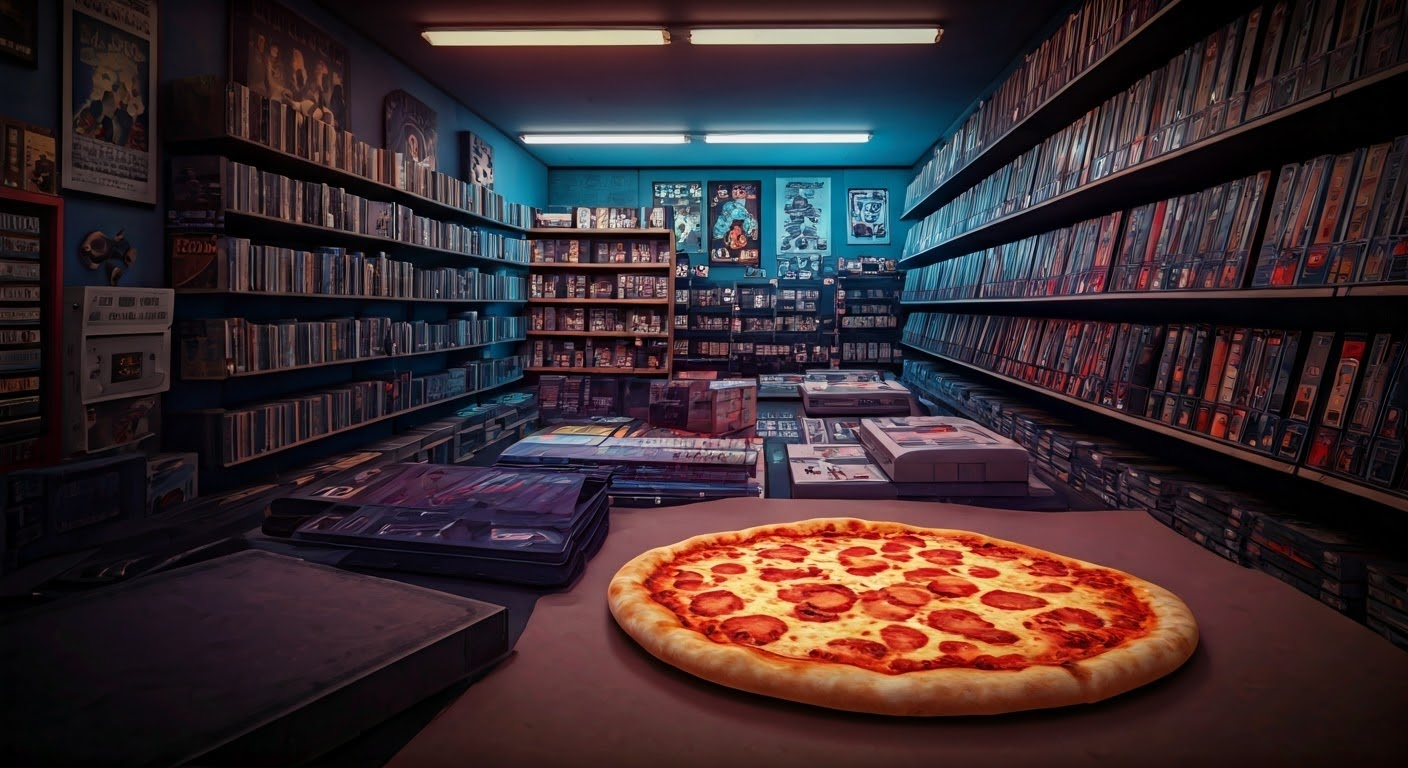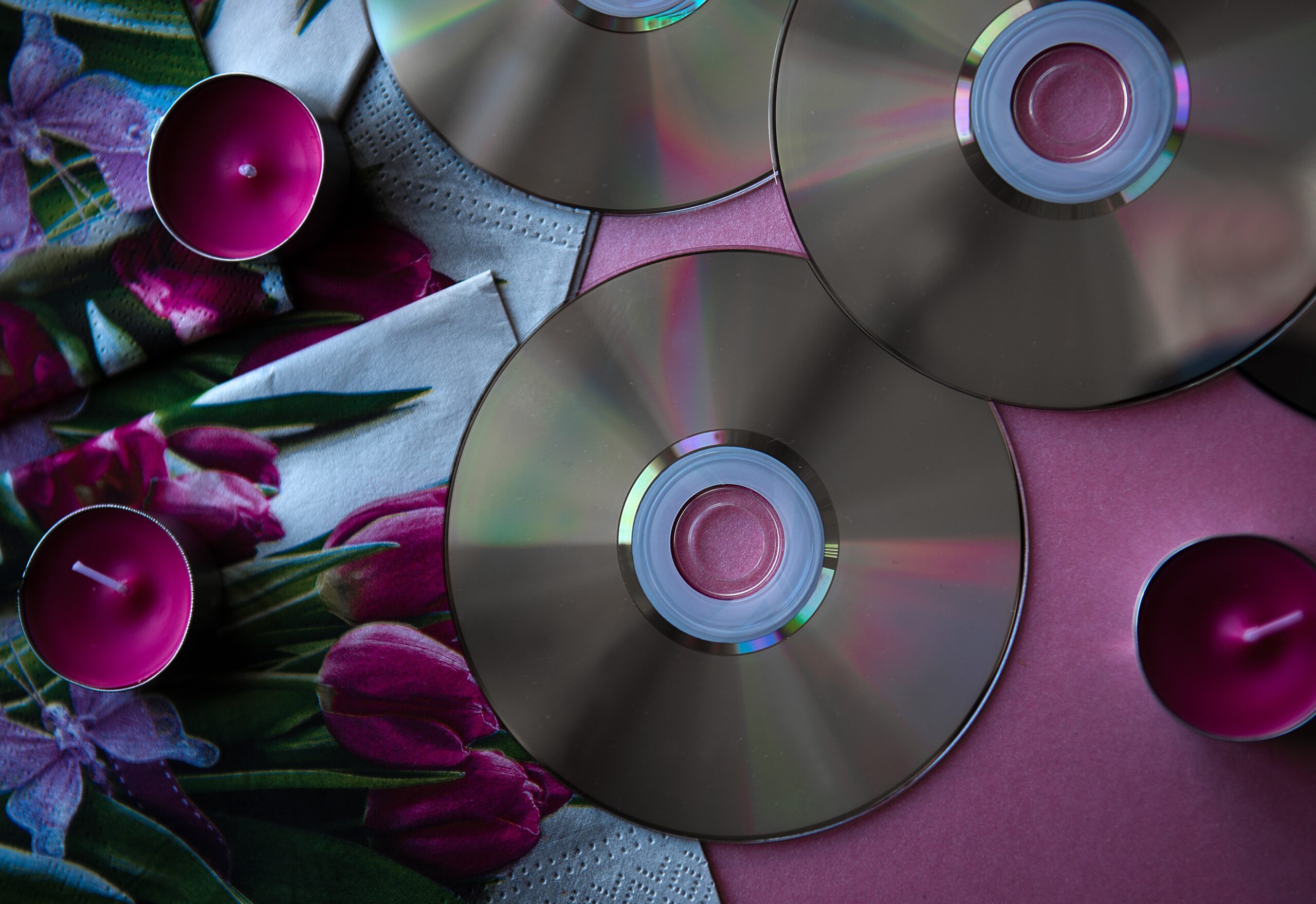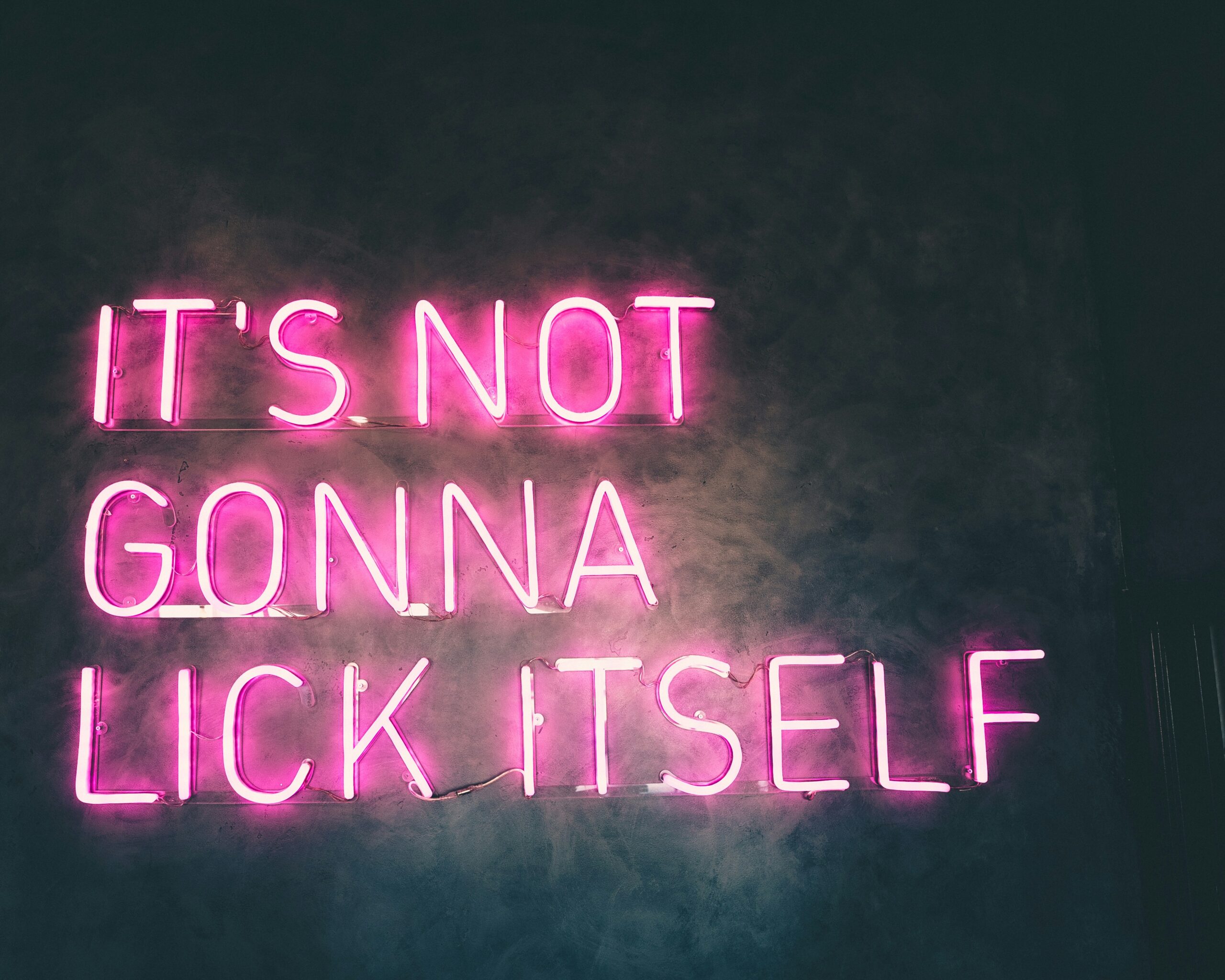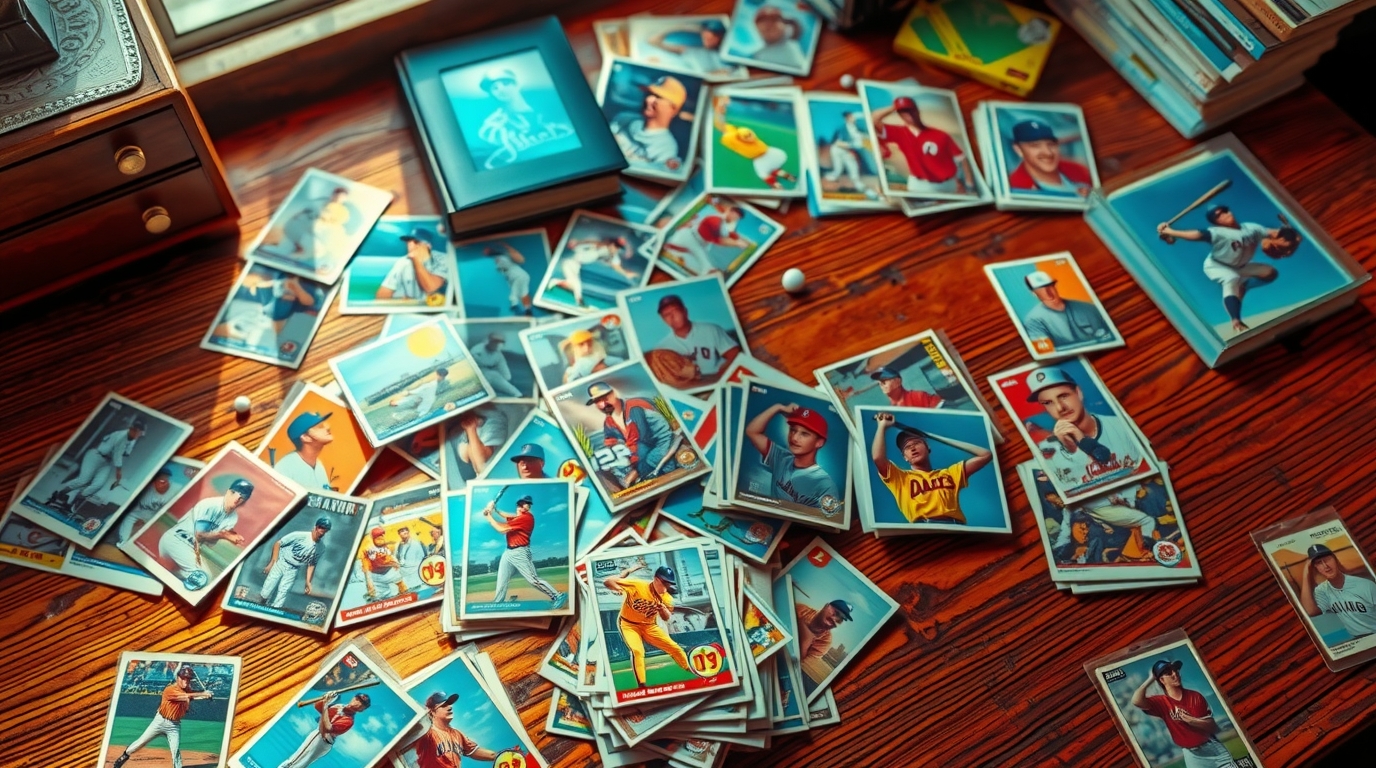Blast from the Past
Remembering the Perfect Friday Night: Pizza and the Video Stores in the 90s

There was a time, before the age of streaming and instant downloads, when Friday nights held a special kind of magic. A ritual so sacred that nothing—not school stress, not the impending doom of Monday—could ruin it. That ritual? A trip to the local video store, a large pizza, and an entire night of cinematic bliss. For kids of the ’80s and ’90s, this wasn’t just a way to spend a Friday—it was the way to spend a Friday.
The Build-Up: That Friday Feeling
Fridays in the ’90s had a vibe all their own. You could feel it in the air from the moment you stepped off the school bus. The weekend was here, homework could wait (or be strategically ignored), and the promise of two glorious days free from the shackles of responsibility stretched ahead. But the true highlight was the Friday night ritual: gathering your family or best friends for a trip to the most hallowed of institutions—the video store.
The excitement started before you even left the house. Maybe your parents would toss you a five-dollar bill and tell you to grab a movie and a snack, or maybe the whole family would pile into the minivan to make an event of it. Either way, there was no better feeling than walking through those doors, greeted by the familiar scent of plastic VHS cases, stale popcorn, and a hint of carpet cleaner.
The Video Store Experience
Walking into a video store was like stepping into a world of infinite possibilities. Rows upon rows of movie cases gleamed under fluorescent lights, promising adventure, horror, comedy, or action—whatever your mood dictated. For those of us who lived for this moment, it was a carefully curated process.
The Movie Selection Process: A Test of Patience and Diplomacy
First, the New Releases wall. This was the prime real estate of the video store, stocked with the hottest movies from the past few months. If you were lucky, you’d snag a copy of that movie everyone at school had been talking about. If not, you’d start the secondary search—heading into the genre aisles, rifling through classics or hidden gems you’d somehow missed.
Then came the debate. If you were with friends or siblings, expect negotiations that rivaled international peace treaties. One wanted action, another comedy, and someone else was always trying to sneak in a horror movie that your parents would never approve of. You’d stand there, clutching a copy of Dumb and Dumber, while your best friend argued that Mortal Kombat: Annihilation couldn’t be that bad. (Spoiler: It was.)
If you were alone, the pressure was still intense. You only had one shot—one choice that would define the night. You’d pick up a case, flip it over, read the synopsis, put it back, pick it up again, second-guess yourself, and eventually grab something completely different at the last second.
After (finally) making a decision, you’d head to the checkout counter, where the friendly (or slightly jaded) video store employee would scan your selection and remind you to rewind. Maybe you’d grab a pack of Twizzlers or a bag of popcorn as an impulse buy before heading home with your cinematic treasure in hand.
The Video Game Gauntlet
But wait—there was a second, equally important battlefield: the video game rental section. This was where so many of our childhood memories were forged. Unlike movies- which were typically cheaper to rent and therefore easier to convince your parents to splurge on multiple- video games were high stake. The higher price often came with the sacrifice of the movie, and you’d only ever get one. There was no room for failure, it was your primary weekend entertainment. You had to choose wisely.
First, the disappointment check: Were all the copies of GoldenEye 007 already rented? (Yes, they were. They always were.) Then, the backup plan. Did you dare take a risk on something unfamiliar, or did you stick with a safe bet, like Mario Kart or Street Fighter II?
Of course, there was always that one friend who insisted on renting the most obscure, questionable game available—something like Shaq Fu or Bubsy 3D—just to “give it a try.” This often led to collective regret and a silent agreement never to speak of it again.
And let’s not forget the sheer terror of renting a cartridge-based game, getting home, and realizing it didn’t work. The solution? A few desperate attempts at blowing into the cartridge like some sort of video game exorcist, hoping to resurrect it before admitting defeat.
The Pizza Component
But no great movie night was complete without its faithful companion: pizza. There was an unspoken rule that if it was Friday night and you were renting movies, you had to have pizza. It was a law of the universe, right up there with gravity and the rule that if you didn’t rewind your VHS tapes, you were a monster.
Pizza night in the ’90s wasn’t about fancy toppings or artisanal crusts. No, it was about the classics: cheese, pepperoni, maybe some sausage if you were feeling adventurous. Thin crust, thick crust, Chicago style, Detroit style, New York style, personal pan, whatever Porky’s was at the time- it didn’t matter. Pizza was happening.
Another interesting component was the timeline in which the pizza-eating moviefest took place. Some families took to going out for pizza first, using the video store as a form of entertainment all on its own afterward. Other families (such as mine) often called in the pizza for pickup, and went to the video store first. Some people went with delivery, some with DiGiorno (which, depending on whether you believed the commercials, was both!).
The Main Event: Movie Time
Finally, the moment had arrived. The pizza was hot, the drinks were cold, and the VCR was primed and ready. You’d slide the VHS tape out of its plastic case, pop it into the player, and sit through the FBI warnings and studio logos with the kind of patience only a ‘90s kid could muster.
Then came the trailers—yes, trailers! Unlike today, where you can skip previews with the click of a button, watching them in the ‘90s was part of the charm. Maybe you’d discover an upcoming movie to look forward to, or maybe you’d groan at yet another family-friendly comedy starring a dog who inexplicably knew how to play sports. Either way, it set the tone.
And then? Pure, uninterrupted cinematic bliss. No pausing to check your phone, no algorithm shoving recommendations in your face—just you, your movie, your Nintendo game, and the simple joy of getting lost in a story, staying up late those Friday nights before the big day of Saturday cartoons- a topic for another time!
Why That All Mattered:
Today, entertainment is instant. Want a movie? Click a button. Not feeling it? Click another. No rewinding, no late fees, no agonizing over a single choice. But also… no adventure.
There’s something about the video store era that streaming can’t replicate. The excitement of the hunt, the thrill of finding a hidden gem, the heartbreak of realizing someone else got the last copy—it was an experience. Now, we scroll endlessly, paralyzed by too many choices, never quite settling on anything.
Sure, streaming is convenient, but does it give you that same satisfaction as clutching a VHS tape and a greasy pizza box, ready to fully immerse yourself in a carefully chosen movie? Probably not.
Looking back, those Friday nights weren’t just about movies, video games, and pizza. They were about the ritual, the anticipation, the shared experience. They were about the simple joy of physically picking out a movie, of waiting for the pizza guy to show up, of pressing “play” and being fully present in the moment.
So here’s to those nights—the ones spent under the glow of a television screen, hands greasy with pizza, surrounded by friends and family, living in a moment we didn’t even realize we’d miss so much. Because if you were lucky enough to experience a Friday night at the video store in the ‘90s, you know—it wasn’t just a night. It was one of the most cherished experiences we would ever have.

Blast from the Past
The Lost Art of the ’90s Mix CD

Long before Spotify playlists and algorithm-driven “Discover Weekly” mixes, there was the mix CD—a shiny, handcrafted token of your musical taste and emotional state. For ’90s kids and early 2000s teens, burning a CD wasn’t just about copying songs onto a disc. It was a sacred ritual, a labor of love, and sometimes, a dramatic cry for attention.
The mix CD was the love letter, the party starter, the breakup soundtrack, and the ultimate road trip companion. It told a story, track by track, carefully sequenced to deliver just the right emotional arc. And if you were lucky enough to receive one? That was basically the equivalent of someone handing you their heart on an 80-minute platter.
Let’s rewind and celebrate the lost art of the ’90s mix CD—and why we secretly miss it.
1. Crafting the Perfect Playlist (Before It Was Easy)
Today, you can drag and drop songs into a playlist in seconds. But in the ’90s, burning a CD meant curation with purpose. You had 700 MB of space (or about 18-20 songs if you were sticking to standard audio format). Every track counted.
There were no “shuffle” options—your tracklist was your narrative. You had to think about the opening song (it needed to hook the listener), the pacing, the build-up, the emotional peaks, and the perfect closer. Did you end on a soft ballad to leave them in their feelings, or on a high-energy banger to make them hit repeat?
Making a mix CD wasn’t passive. It required intent, creativity, and a little soul-searching.
2. The Drama of LimeWire, Napster, and Sketchy Downloads
Getting the songs for your mix wasn’t always as easy as pulling up a digital library. In the late ’90s and early 2000s, you were often at the mercy of Napster, LimeWire, Kazaa, or whatever shady file-sharing service your dial-up connection could tolerate.
Every download was a gamble: Would you get the full song? Would it randomly cut off at 1:42? Did you accidentally download a weird live version with audience screams drowning out the vocals?
And let’s not even talk about computer viruses, and how many of those we downloaded on accident…
3. The Handwritten Tracklist: A Window Into Your Soul
Sure, the mix itself was important—but the presentation was just as crucial. The handwritten tracklist on the inside of the jewel case or scribbled across the CD-R itself? That was where the magic lived.
Would you go with block letters? Bubble letters? Color-coded pens? Maybe throw in a doodle of a broken heart or some stars? The effort you put into the cover art and tracklist was a direct reflection of how much you cared (or how much you wanted to look like you didn’t care).
Bonus points if you titled the mix something poetic like “Summer Nights ’99” or “Songs for When You’re Not Around.” Maximum drama.
4. The Unspoken Messages Hidden in the Mix
Mix CDs were often love letters in disguise. Every song choice could feel like a secret message. Were you telling your crush that a song reminded you of them? Did including a specific song relay the message that you were in love? That you were confused? That you were pissed?
The sequencing itself was part of the message. Slotting “I Want You to Want Me” right after “Friends Forever” wasn’t accidental—it was a carefully calculated emotional rollercoaster.
You could say things with a mix CD that you were too chicken to say out loud. It was teenage vulnerability burned onto a disc.
5. The Risk and Reward of Gifting a Mix CD
Giving someone a mix CD was a bold move. You were putting your tastes and feelings out there for judgment. Would they listen to it on repeat and fall madly in love with you—or toss it into the glove compartment and forget it existed?
Even worse: Would they think your song choices were cringe? Did they think you were nuts?
But when it worked? When your mix hit just right and they actually got it? That feeling was unbeatable.
6. The Joy of Listening Front to Back
Unlike playlists today that often get shuffled, a good mix CD was designed to be listened to from start to finish. Each song led to the next, creating a vibe, a journey. There was anticipation: You knew what was coming after that third track, and the transition felt just right.
This sequencing made certain song pairings iconic in your mind. To this day, hearing “Bittersweet Symphony” might still remind you of whatever song you slotted right after it on your “End of Summer ’98” mix.
Final Thoughts
The mix CD was the spiritual successor to the mixtape, but it came with the power of digital precision. It lived in that perfect moment between analog and digital, between effort and technology. Making one wasn’t about hitting “shuffle” or asking an AI to recommend songs—it was about pouring your heart, your taste, and your creativity into 80 minutes of sonic storytelling.
So here’s to the lost art of the ’90s mix CD. May your old burned discs still spin, and may we never forget the feeling of holding someone’s emotions in a jewel case labeled “For You.”
Oh, and if you still have one of your old mixes? Go ahead—pop it into a dusty CD player you have chilling in the garage (if it still works). Those feels still hit hard.
Blast from the Past
Licking the Cold Metal Pole – The Ultimate Double Doggy Dare
Who else put their pocket money on the line?

Does Licking the Rusty Pole at School Really Make Your Tongue Stick?
We all knew that kid. The one who, on a dare, pressed their tongue to the cold, rusted metal pole on the playground in the dead of winter. The result? Panic, screaming, and an unfortunate trip to the nurse’s office (or worse, a teacher with a cup of warm water). But was it really an urban legend? Or was there actual science behind the whole frozen-tongue fiasco?
Let’s break it down and finally settle the mystery of whether licking a rusty, frozen pole really makes your tongue stick—and why.
The Science of Sticking
The short answer? Yes. Licking a cold metal pole under the right conditions will cause your tongue to stick. And there’s a pretty simple scientific reason behind it.
Metal is an excellent conductor of heat, meaning it quickly absorbs warmth from whatever touches it—including your tongue. In frigid temperatures, metal gets so cold that it can instantly freeze any moisture that comes into contact with it. Your tongue, being nice and damp, makes the perfect candidate for this science experiment gone wrong.
When you lick the pole, the saliva on your tongue freezes almost instantly, creating a bond between your tongue and the metal. The result? You’re stuck, and no amount of panicked yanking is going to set you free easily. If you pull too hard, you risk leaving behind a bit of skin (ouch), and let’s be honest, nobody wants to be that person.
But What About Rust?
Now, if you grew up in the ‘80s or ‘90s, chances are the poles on your school playground weren’t just cold—they were rusty too. So, did rust make it more or less likely that your tongue would stick?
Rust itself doesn’t change the science of freezing, but it does make the experience even grosser. Rust is simply iron oxide, and while small amounts of it aren’t necessarily dangerous, it’s definitely not something you want in your mouth. Plus, rusty surfaces tend to be rough and uneven, which means they might actually increase the contact points between your tongue and the metal, making the bond even stronger. In other words, licking a rusty pole might not only get you stuck—it might get you really stuck.
Did Every Kid Try This?
While it might not have happened to everyone firsthand, everyone knew someone who got their tongue stuck. The story is so widespread that it even made its way into pop culture, most famously in A Christmas Story, where poor Flick learns the hard way that double-dog dares should never be taken lightly.
Even though we all heard the warnings, there was always that one kid who had to test it out. Maybe it was curiosity, maybe it was peer pressure, or maybe it was just the undying need to see if what our older siblings told us was true.
The Verdict: Myth or Fact?
Fact. It turns out, this was one of the few schoolyard myths that was completely real. Freezing temperatures, metal poles, and a curious tongue equal instant regret. So, if you ever get the urge to test this old playground legend as an adult (hey, no judgment), just remember—you now have the wisdom to avoid that particular mistake.
And if you did fall victim to the frozen pole in your youth, wear it as a badge of honor. You were part of an exclusive club of kids who learned an unforgettable lesson in physics… the hard way.
Blast from the Past
Where Have All the Baseball Cards Gone?

The Rise and Fall of Baseball Cards: From Treasure to Tragedy
There was a time when baseball cards weren’t just pieces of cardboard—they were currency, status symbols, and tiny portals into the world of America’s pastime. If you grew up in the ’80s or early ’90s, you probably remember the thrill of tearing open a fresh wax pack, the intoxicating scent of cheap gum, and the hope that you might find a Ken Griffey Jr. rookie card or a Don Mattingly gem hidden inside.
But somewhere along the way, the baseball card industry went from a booming phenomenon to an overproduced cautionary tale. Today, most of those once-prized collections are gathering dust in attics, their values nowhere near the goldmine we all once imagined. So what happened? How did baseball cards go from playground gold to nearly worthless relics of a bygone era? Let’s take a trip down memory lane—and examine where it all went wrong.
The Golden Age of Baseball Cards
In the early-to-mid 20th century, baseball cards were an essential part of childhood. Kids collected them, traded them, and even stuck them in bicycle spokes for that satisfying “motor” sound. Cards from the ’50s and ’60s—like the legendary 1952 Topps Mickey Mantle—became some of the most valuable collectibles of all time, setting the stage for what would later become a full-blown card craze.
By the 1980s, the hobby had evolved into something bigger. Topps, Fleer, and Donruss were producing high-quality sets, and by the late ’80s, Upper Deck entered the scene, introducing premium cards with sharp photography and holograms. Card shops popped up everywhere, and suddenly, collecting wasn’t just for kids—it was an investment.
The media and magazines hyped up certain cards as “must-haves,” fueling a new wave of collectors who saw dollar signs instead of childhood joy. People started hoarding unopened boxes, convinced that these little rectangles of cardboard were their ticket to early retirement. And then… the bubble burst.
The Overproduction Era: A Cardboard Catastrophe
By the early ’90s, baseball card companies saw the demand and did what any business would do: they flooded the market. Millions of cards were printed. Then tens of millions. Then hundreds of millions. Every kid with a shoebox full of cards thought they were sitting on a fortune, but the reality was far less glamorous—when supply outweighs demand, value plummets.
This period—known as the “junk wax era”—saw an explosion of mass-produced, low-value cards that are now worth little more than their nostalgic appeal. Collectors who had hoarded boxes expecting them to appreciate in value were left with stacks of worthless cardboard.
And it wasn’t just overproduction that hurt the industry. By the mid-to-late ’90s, baseball itself was suffering. The 1994 strike, followed by steroid scandals, chipped away at the sport’s integrity, and as interest in baseball waned, so did interest in collecting its cards.
The Modern Resurgence—And Why It’s Not the Same
Fast-forward to today, and you might hear whispers about a resurgence in the card-collecting hobby. But while there has been renewed interest—especially in high-end, limited-run cards—the nature of the market has changed.
Companies like Topps and Panini have embraced a new strategy: exclusivity. Instead of mass-producing millions of identical cards, they now release short-print, limited-edition cards, often autographed or featuring jersey swatches. This keeps values high, but it’s also made the hobby less accessible.
Whereas kids once bought packs for pocket change, today’s “chase” cards are often locked behind expensive boxes that can cost hundreds of dollars. The fun of ripping open a pack and hoping for a legendary pull has been replaced by a business-driven, speculative market that caters more to deep-pocketed collectors than to everyday fans.
The Legacy of Baseball Cards
Despite the decline of the casual collecting culture, baseball cards still hold a special place in our memories. Even if those shoeboxes of junk wax aren’t worth much, they represent something priceless: a time when the simple joy of finding your favorite player’s card was more important than its value.
Maybe the lesson here is that collectibles should be about passion, not profit. The real treasure wasn’t in the investment—it was in the experience. And maybe, just maybe, that’s why we still hold onto them in our memories, even when we know they never did manage to make us rich.
-

 Let's Settle It1 month ago
Let's Settle It1 month agoTop 10 Cheat Codes That Would Be Awesome in Real Life
-

 Blast from the Past1 month ago
Blast from the Past1 month agoWhere Have All the Baseball Cards Gone?
-

 Blast from the Past1 month ago
Blast from the Past1 month agoLicking the Cold Metal Pole – The Ultimate Double Doggy Dare
-

 Blast from the Past1 month ago
Blast from the Past1 month agoLet’s Talk About the Zipper
-

 Blast from the Past1 month ago
Blast from the Past1 month ago10 Toys from the ’80s and ’90s That Would Never Be Allowed Today
-

 Blast from the Past1 day ago
Blast from the Past1 day agoThe Lost Art of the ’90s Mix CD
-

 Dollhouse Diaries1 day ago
Dollhouse Diaries1 day agoHow ’90s Mall Culture Shaped a Generation of Girls
-

 High Score1 day ago
High Score1 day agoTop 10 School Lunch Items from the ’90s (and their trade value) That Made Lunchtime Legendary




